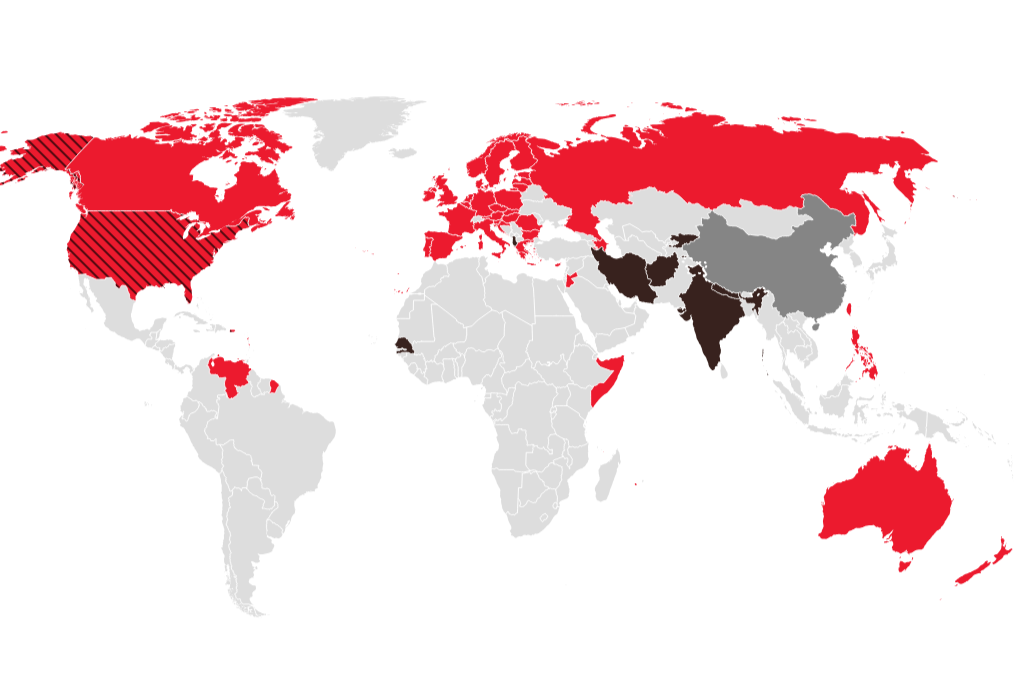How TikTok became the world’s most controversial app
Deadline for a US ban is just days away, writes Anthony Cuthbertson, with more than 3 billion people around the world already blocked from using the app


After amassing more than 170 million users in the US in less than seven years, TikTok is now facing a complete ban if a deal is not made with its parent company ByteDance before 5 April.
TikTok has already disappeared from Apple and Google app stores ahead of the law taking effect on Saturday, which requires ByteDance to sell the video-sharing app to a US owner due to national security concerns.
President Donald Trump gave TikTok a 75-day reprieve from the ban after he took office in January, however ByteDance is yet to secure a buyer.
The US is not the first major market for TikTok to cut off the video-sharing app. In 2020, India issued a complete ban of the app that cut off around 200 million users. The Indian government cited security issues with the app, claiming that alleged ties between ByteDance and the Chinese government posed a threat to India’s sovereignty.
Other countries and areas, including the UK and European Union, have put partial bans in place, which prevent government workers and military personnel from installing the app on their devices.
Various federal and state TikTok bans are already in place in the US, with lawmakers citing national security concerns. These fears have done little to stem TikTok’s growth in the US. The app has proved to be one of the most popular both in America and globally last year with 52 million downloads in the US and 733 million worldwide – despite more than 3 billion people around the world being blocked from downloading it.
This has helped bring the total number of TikTok users around the world to above 2 billion, with only India’s ban nearly three years ago slightly slowing its growth – but only temporarily.
A survey poll from the Pew Research Center last year found TikTok to be the fastest-growing platform in the US, as users beyond the social media app’s typically young demographic began to adopt it.
US adults who have TikTok accounts are increasingly using the app as a source of news, with roughly a third of people aged 18-29 regularly using it to consume news in 2023.
The FBI claims that Chinese state ties to parent company ByteDance could allow the app to “manipulate content” in order to spread harmful propaganda.
Fears around national security have been countered with questions about censorship, with the Electronic Frontier Foundation describing the prospect of a ban as a “seed of genuine security concern wrapped in a thick layer of censorship”.
The US digital liberties group has called on people to “resist a governmental power to ban a popular means of communication and expression”.
In its filing with the Supreme Court in January, TikTok alleged that banning the app would “shutter” one of the most popular speech platforms at a highly political moment.
“The act will shutter one of America’s most popular speech platforms the day before a presidential inauguration,” TikTok wrote. “This, in turn, will silence the speech of applicants and the many Americans who use the platform to communicate about politics, commerce, arts, and other matters of public concern.”
Under the law passed last year and upheld on Friday by a unanimous Supreme Court, the platform had until Sunday to cut ties with its China-based parent or shut down its US operation to resolve concerns it poses a threat to national security.
The United States has never previously banned a major social media platform.
President Trump said over the weekend that he believed a deal would be made before Saturday’s deadline.
Join our commenting forum
Join thought-provoking conversations, follow other Independent readers and see their replies
1Comments